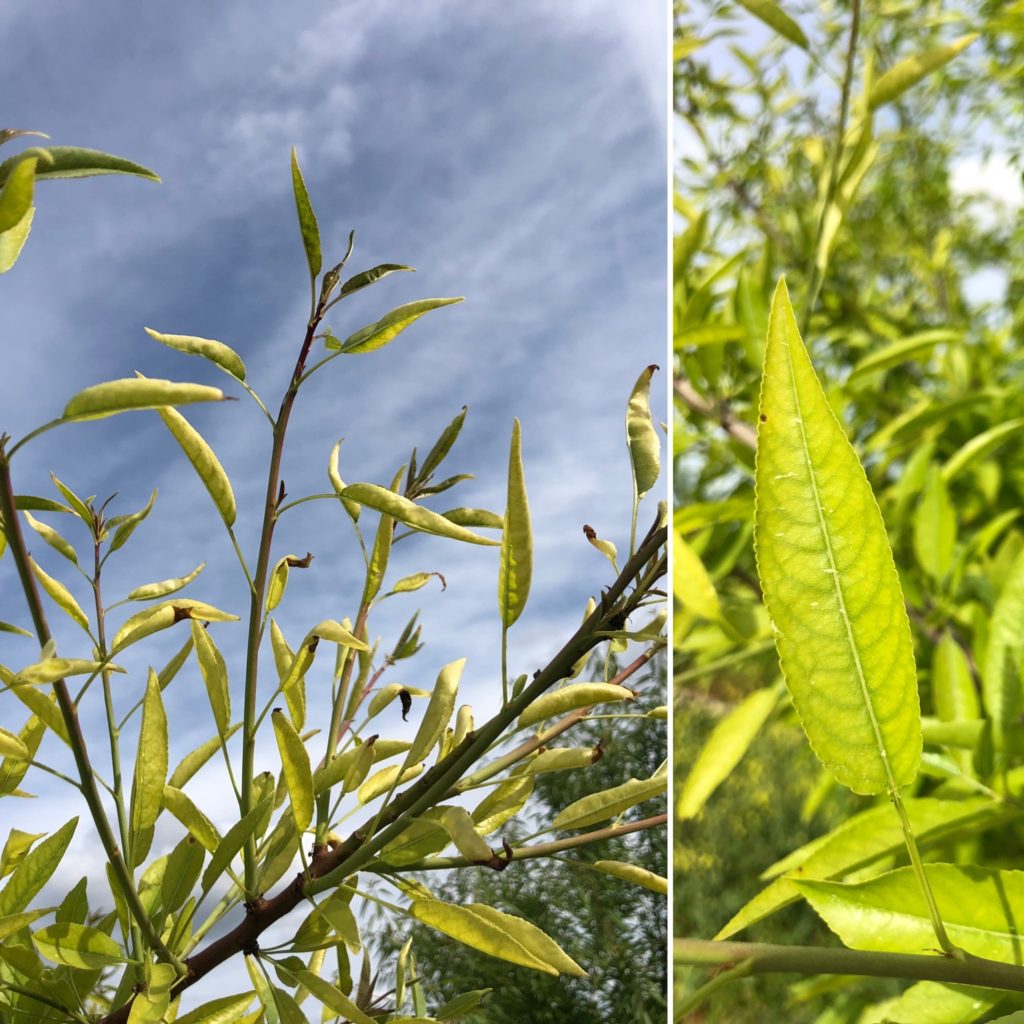
May 13, 2021Iron deficiency of almond pinpointed
It is common to observe iron deficiency within new growth of almonds. Iron is an essential micronutrient that is used to build chloroplasts. Without iron, the leaves fail to turn green. More obviously, iron deficiency causes inter-veinal chlorosis – or yellowing between the veins – on new growth.
Severe deficiency will reduce growth and lead to increased susceptibility to minor leaf pathogens. Iron deficiency is not observed on older tissues due to lack of mobility within the plant.
Iron deficiency is commonly observed in the spring as yellowish looking trees. This is due to wet and saturated soil conditions that limit fine feeder root development. These roots serve as the primary point for iron absorption. Secondly, too wet of soils increases the amount of carbon dioxide (CO2), which forms carbonate (HCO3-) leading to a temporary increase in soil pH, which reduces iron’s availability. The solution for this cause is simple – withhold irrigation until soil moisture levels drop and good aeration can occur. It is very common to see recovery within 7-10 days after the soils have dried to field capacity.
The second primary cause of iron deficiency is “lime induced iron chlorosis.” Since higher pH restricts iron uptake, it can create deficiencies. This is very common in poor quality soils in which the pH is greater than 7.5. A soil test or soil pH meter can help determine if high pH is the cause of the observed deficiency. Soil acidification or modification is recommended to resolve the symptoms.
When dealing with “lime induced iron chlorosis,” there are a few strategies to manage. These include the use of acids or acid forming fertilizer to lower soil pH. Injecting acids into the fertilization system can be complicated, but tend to direct the acid to the area which contains the most roots making it reasonably efficient. Soil sulfur can also be used, but due to the chemical state, this element has to be converted by soil bacteria before acidifying the soil. It can take a few years of continual applications before seeing any results.
Chelated iron containing soil amendments can also be considered. Typically, with alkaline soils, EDTAs aren’t very effective due to the loss and oxidation of the iron. In these soils it is better to apply an EDDHA chelate. Lastly, foliar sprays can help mitigate the effects on an annual basis. Inclusion of iron within the foliar nutrient spray can make sure the iron is placed where the tree needs it – at the growling points.
Although foliar sprays are very effective, they require a pass with the spray rig. Additional rig passes can be reduced by tank mixing the material with other sprays in the year.
– David Doll is a University of California Cooperative Extension nut crop pomology farm advisor for Merced County.
Severe iron deficiency of almond. Note the yellow leaves with green veins. Symptoms appear at the new growth. Photo: University of California







